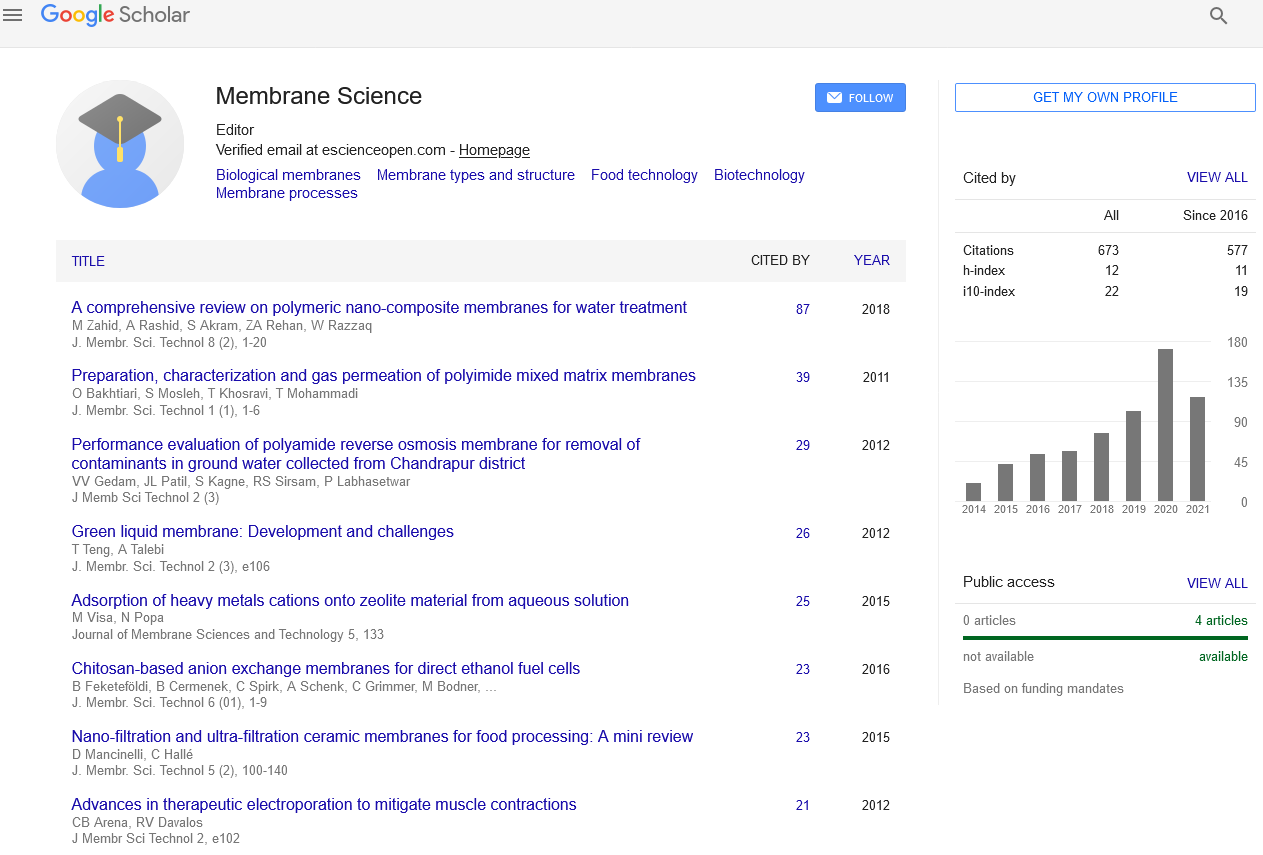Indexed In
- Open J Gate
- Genamics JournalSeek
- Ulrich's Periodicals Directory
- RefSeek
- Directory of Research Journal Indexing (DRJI)
- Hamdard University
- EBSCO A-Z
- OCLC- WorldCat
- Proquest Summons
- Scholarsteer
- Publons
- Geneva Foundation for Medical Education and Research
- Euro Pub
- Google Scholar
Useful Links
Share This Page
Journal Flyer

Open Access Journals
- Agri and Aquaculture
- Biochemistry
- Bioinformatics & Systems Biology
- Business & Management
- Chemistry
- Clinical Sciences
- Engineering
- Food & Nutrition
- General Science
- Genetics & Molecular Biology
- Immunology & Microbiology
- Medical Sciences
- Neuroscience & Psychology
- Nursing & Health Care
- Pharmaceutical Sciences
Abstract
Micropollutant, Micropollutant Metabolites and Toxin Removals in a Drinking Water Treatment Plant Using Some Novel and Economical Removal Processes
Delia Teresa Sponza* and Yudam Blylk Aras
The aim of this study was to detect the levels of heptachlor (1, 4, 5, 6, 7, 8, 8-Heptachloro-3a, 4, 7, 7a-tetrahydro-4, 7-methano-1H-indene) and acetochlor (2-Chloro-N-(ethoxymethyl)-N-(2-ethyl-6-methylphenyl)-acetamide) Micropollutants (MK), their Metabolites (M) (heptachlor epoxide and fenthion and fenthion sulfoxide and some Toxins (T) (mycrocystin and aplysiatoxin from cyanotoxin) in the raw water of a drinking water treatment plant. Measurement procedures for the MK, M, and Ts have been developed. A sequential treatment process consisting of a Granulated Activated Carbon (GAC)/contact aerobic Membrane Bioreactor (MBR), Electro Fenton (EF) and NanoFiltration (NF) were found to be efficient in the treatment of MK, M and T. The maximum heptachlor and acetachlor removals in GAC by adsorption was 64% and 14%, respectively, while the Dissolved Organic Carbon (DOC) yields were recorded as 68% after 24 h. In the GAC/MBR contact aerobic reactor system, acetachlor and heptachlor yields were recorded as 89% and 27%, respectively. The heptachlor metabolite heptachlor epoxide was produced in this stage (30 ng/l) while the fenthion and fenthion sulfoxide metabolites of acetochlor were recorded as (120 ng/l) and (280 ng/l), respectively. These metabolites were removed with yields of 94.4%, 98%, and 94%, respectively, in the MBR. In NF the total yields of both pesticides and their metabolites varied between 96% and 98%. The toxin concentrations were reduced to (0.01 ng/l) and (0.02 ng/l) in the effluent of NF. The total cost of treating 1 m3 of raw drinking water was calculated as €1.98
Published Date: 2020-07-30; Received Date: 2020-07-13


